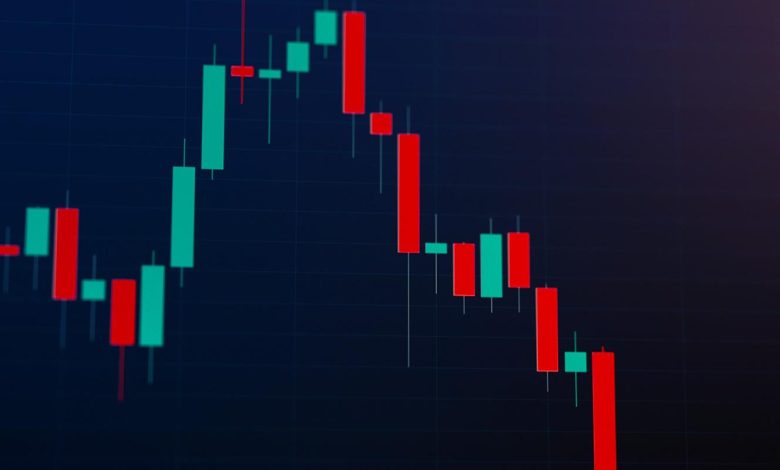The Role of Technical Analysis in Crypto Investing

- Understanding the basics of technical analysis
- Key indicators used in technical analysis for crypto investing
- How technical analysis can help predict price movements in the crypto market
- The importance of chart patterns in technical analysis for crypto investing
- Common mistakes to avoid when using technical analysis in crypto investing
- Combining fundamental and technical analysis for successful crypto investing
Understanding the basics of technical analysis
Technical analysis is a method used by traders to evaluate investments and identify trading opportunities by analyzing statistical trends gathered from trading activity, such as price movement and volume. It is based on the belief that historical price data can help predict future price movements. By studying charts and patterns, technical analysts aim to forecast the direction of an asset’s price and make informed trading decisions.
One of the key principles of technical analysis is the idea that price movements are not random but follow a trend. This means that by studying past price movements, traders can identify patterns that may indicate where the price is likely to go next. Technical analysts use various tools and indicators, such as moving averages, support and resistance levels, and trend lines, to help them interpret market data and make predictions about future price movements.
Understanding the basics of technical analysis is essential for crypto investors looking to make informed decisions about when to buy or sell digital assets. By learning how to read charts and interpret patterns, investors can gain valuable insights into market trends and potentially improve their trading performance. While technical analysis is not foolproof and cannot guarantee success, it can be a useful tool for investors looking to better understand the dynamics of the crypto market.
Key indicators used in technical analysis for crypto investing
When it comes to crypto investing, technical analysis plays a crucial role in making informed decisions. There are several key indicators used in technical analysis that investors should be familiar with:
- Trend lines: Trend lines are used to identify the direction of a cryptocurrency’s price movement over time. They can help investors determine whether a crypto asset is in an uptrend, downtrend, or trading sideways.
- Support and resistance levels: Support levels are price points at which a cryptocurrency’s price tends to stop falling and bounce back, while resistance levels are price points at which a crypto asset’s price tends to stop rising and pull back. These levels can help investors identify potential entry and exit points.
- Volume: Volume refers to the number of cryptocurrency units traded over a specific period. High volume typically indicates strong market interest, while low volume may suggest a lack of interest or liquidity.
- Relative Strength Index (RSI): The RSI is a momentum oscillator that measures the speed and change of price movements. It ranges from 0 to 100 and is used to identify overbought or oversold conditions in a crypto asset.
- Moving averages: Moving averages are used to smooth out price data and identify trends over a specific period. The most commonly used moving averages are the simple moving average (SMA) and the exponential moving average (EMA).
By understanding and analyzing these key indicators, investors can gain valuable insights into the crypto market and make more informed decisions when investing in cryptocurrencies.
How technical analysis can help predict price movements in the crypto market
Technical analysis is a valuable tool for predicting price movements in the crypto market. By analyzing historical price data, traders can identify patterns and trends that may indicate future price movements. This analysis involves studying charts, indicators, and other statistical data to make informed decisions about when to buy or sell cryptocurrencies.
One of the key principles of technical analysis is that price movements are not random but follow a certain pattern. By identifying these patterns, traders can make more accurate predictions about where prices are likely to go next. This can help them make better investment decisions and maximize their profits in the volatile crypto market.
Technical analysis can also help traders identify support and resistance levels, which are key areas where prices are likely to reverse. By paying attention to these levels, traders can set stop-loss orders to limit their losses and take-profit orders to lock in their gains. This can help them manage risk more effectively and protect their capital in the unpredictable crypto market.
The importance of chart patterns in technical analysis for crypto investing
Chart patterns play a crucial role in technical analysis for crypto investing. These patterns provide valuable insights into the market behavior of cryptocurrencies, helping investors make informed decisions. By analyzing these patterns, investors can identify potential trends and price movements, allowing them to anticipate market movements and adjust their investment strategies accordingly.
One of the most common chart patterns used in technical analysis is the head and shoulders pattern. This pattern consists of three peaks, with the middle peak being the highest. It is considered a bearish reversal pattern, indicating a potential trend reversal from bullish to bearish. By recognizing this pattern, investors can take appropriate actions to protect their investments and capitalize on potential opportunities.
Another important chart pattern is the double top pattern, which is characterized by two peaks at approximately the same price level. This pattern is also considered a bearish reversal pattern, signaling a potential trend reversal. By identifying this pattern, investors can adjust their investment strategies to minimize losses and maximize profits.
Additionally, the symmetrical triangle pattern is a common continuation pattern in technical analysis. This pattern is formed by converging trendlines, indicating a period of consolidation before the price breaks out in the direction of the previous trend. By recognizing this pattern, investors can anticipate potential price movements and position themselves accordingly.
In conclusion, chart patterns are essential tools in technical analysis for crypto investing. By understanding and analyzing these patterns, investors can gain valuable insights into market trends and make informed decisions to optimize their investment strategies. Whether identifying reversal patterns or continuation patterns, chart patterns provide a valuable framework for investors to navigate the volatile world of cryptocurrency investing.
Common mistakes to avoid when using technical analysis in crypto investing
When utilizing technical analysis in crypto investing, there are several common mistakes that investors should avoid to make informed decisions and maximize profits.
- **Relying** solely on technical analysis: While technical analysis is a valuable tool, it should not be the only factor considered when making investment decisions. It is essential to also take into account fundamental analysis and market sentiment to gain a comprehensive understanding of the market.
- Ignoring risk management: Failing to implement proper risk management strategies can lead to significant losses. It is crucial to set stop-loss orders and diversify your portfolio to mitigate risks effectively.
- Chasing trends: Trying to chase trends based on technical analysis alone can be risky. It is essential to conduct thorough research and analysis before making any investment decisions to avoid falling into traps set by market manipulators.
- Overlooking the impact of external factors: External factors such as regulatory changes, macroeconomic events, and market news can significantly influence the crypto market. Ignoring these factors can lead to inaccurate predictions based on technical analysis alone.
- Not adapting to market conditions: Market conditions can change rapidly, and it is essential to adapt your technical analysis strategies accordingly. Being flexible and open to adjusting your approach can help you stay ahead of market trends.
Combining fundamental and technical analysis for successful crypto investing
Combining fundamental and technical analysis is crucial for successful crypto investing. While technical analysis focuses on historical price data and chart patterns, fundamental analysis looks at the underlying factors that drive the value of a cryptocurrency.
By using both approaches, investors can gain a more comprehensive understanding of the market and make more informed decisions. Fundamental analysis helps investors evaluate the long-term potential of a cryptocurrency, while technical analysis can provide insights into short-term price movements.
When combining these two methods, investors can identify opportunities that may not be apparent when using just one approach. For example, a cryptocurrency may have strong fundamentals but be experiencing a short-term price dip due to market sentiment. By using technical analysis to identify support levels, investors can buy in at a favorable price.
Ultimately, successful crypto investing requires a balanced approach that takes into account both fundamental and technical factors. By combining these two analyses, investors can make more strategic decisions and increase their chances of success in the volatile crypto market.



